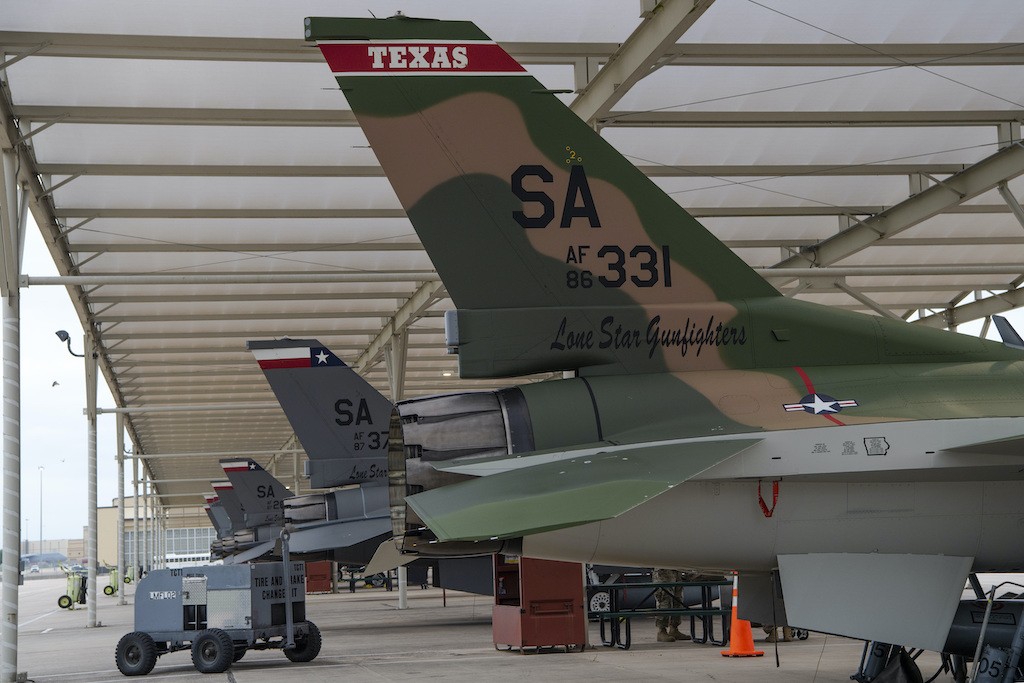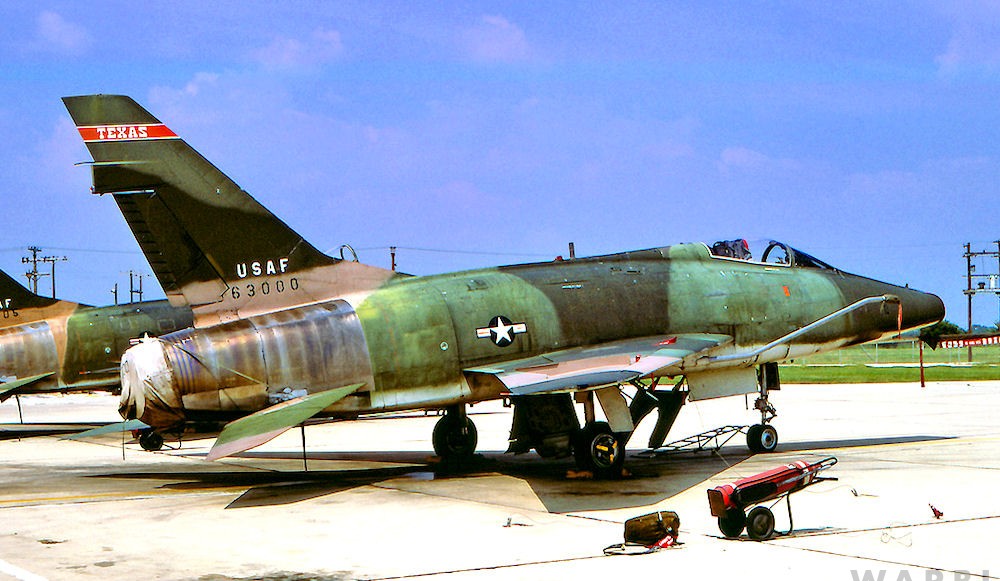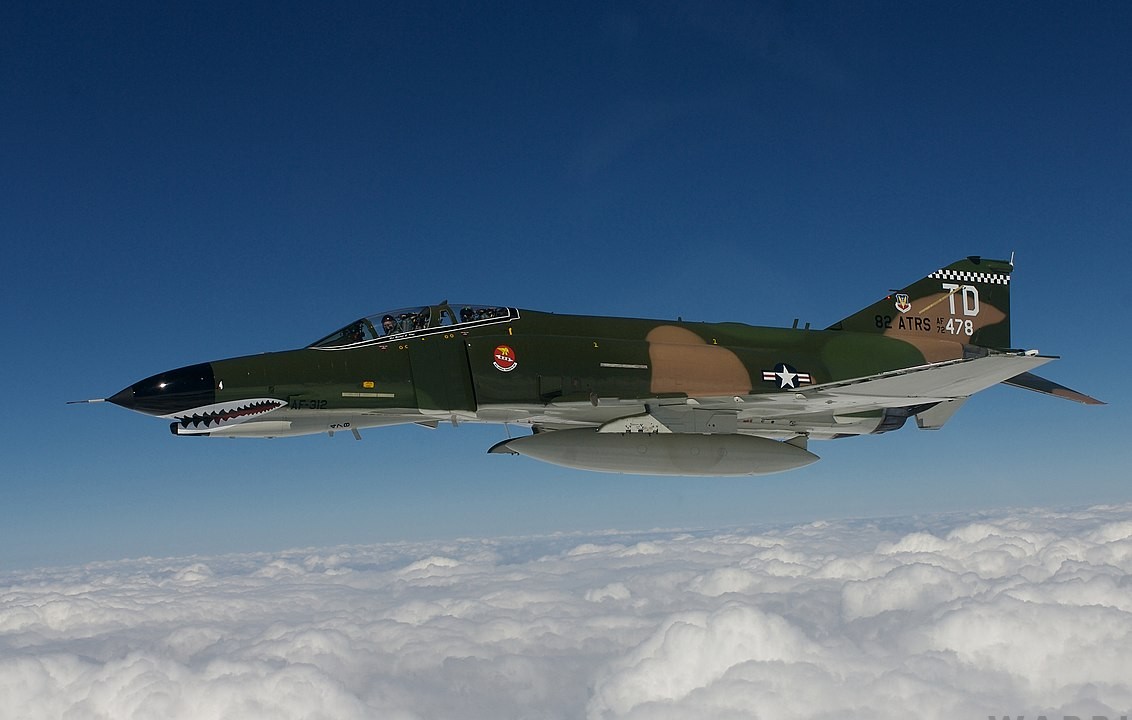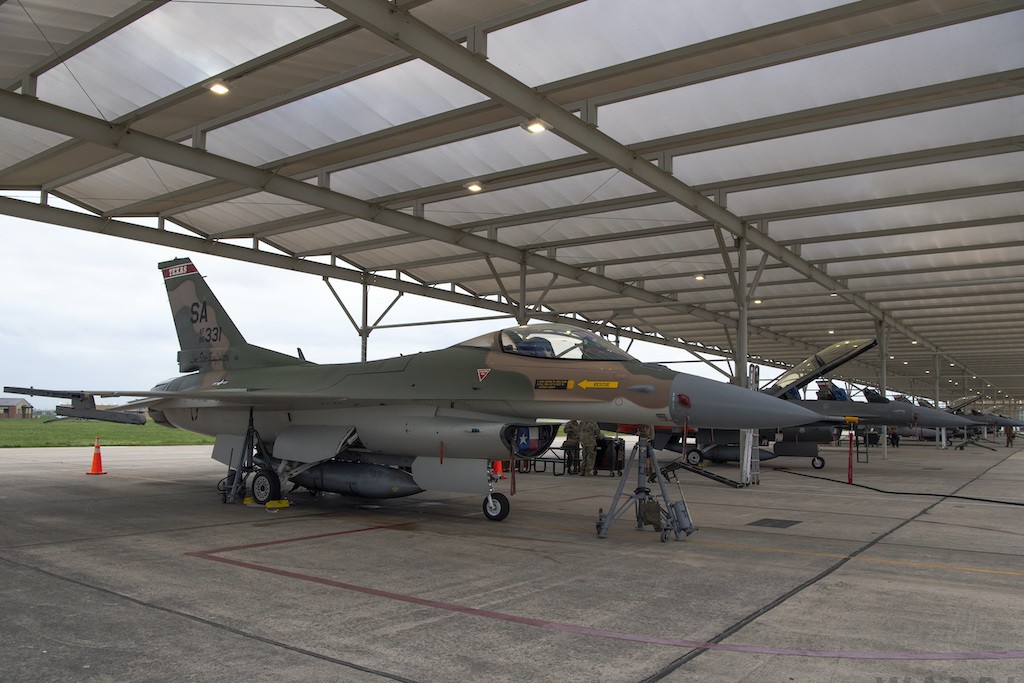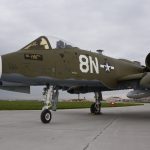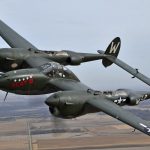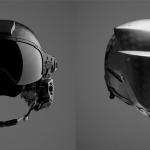By Stephen Chapis
At first glance one might mistake it for an F-16A of the Venezuelan Air Force, but then it quickly becomes apparent that the Viper seen here hails from the Texas Air National Guard’s 149th Fighter Group (FG)/182nd Fighter Squadron (FS), which is based at Joint Base San Antonio-Lackland. The Southeast Asia (SEA) paint scheme, which was applied to F-16C USAF #86-331, marks the 25th anniversary of the wing being redesignated from the 149th FG and harkens back to the days when the unit for F-4D Phantom IIs.
When U.S. Air Force combat aircraft began arriving in Southeast Asia, they wore their respective “peacetime” paint schemes. A majority of aircraft, from T-28s and B-57s to F-105s and B-52s, were natural metal with full color markings, with F-4s arriving in-country wearing their glossy gray over white Air Defense schemes, all of which stood out greatly against the jungles of Vietnam, Thailand, and Laos. This quickly led to the development of the unimaginatively named “Southeast Asia” paint scheme which consisted of dark green (FS 34079), medium green (FS 34102), and dark tan (FS 30219) on the upper side of aircraft and gray (FS 36622) and the undersides. With few exceptions, every USAF aircraft, including obscure Helio Couriers and Lockheed JetStars, that served in the conflict wore this scheme.
Even after the end of the war, the scheme carried on, mostly on F-105s, F-4s, and A-7s, into the 1980s, with the latter pair receiving a wraparound variation where the three upper colors replaced the gray on the underside of the aircraft. By the mid-80s the SEA scheme was replaced by the European One paint scheme. The first time the SEA scheme was applied as a so-called heritage scheme was on QF-4Es of the 82nd Aerial Targets Squadron in the years leading up to their retirement in 2017. Given that Phantoms had previously worn this scheme it wasn’t especially notable, but when applied to this 149th FW F-16C, the scheme is absolutely striking.
While the 182nd didn’t see action in Vietnam, the unit has a stellar combat record in World War II and Korea. Established in 1943 with P-47s, the squadron made its combat debut on March 14, 1944, when it flew a fighter sweep over the Channel. They supported the landings on D-Day and were at the forefront of the action in Cherbourg, St Lo, and the Battle of the Bulge and on across the Rhine. The squadron remained in Europe for a period after the war.
After the war, the wing’s component 396th FS was inactivated and then reconstituted as the 182nd FS and assigned to the Texas ANG and equipped with F-51D Mustangs. In February 1951, the Mustangs were replaced by the F-84E Thunderjet, and soon thereafter the unit deployed to Japan and by June they were engaged in combat operations in Korea where they flew over 15,000 combat sorties, scored four aerial victories, including the first MiG-15 victory by a guard unit.
Shortly before the 182nd relinquished their F-51Ds, the squadron had their 15 minutes of fame when a dozen Mustangs were repainted in the markings of Republic of Korea Air Force for the Universal motion picture Battle Hymn about Lieutenant Colonel (and Reverend) Dean Hess, who became known “Father of the Korean War Orphans”. In the six plus decades since that time the 149th has flown the most iconic combat aircraft in the U.S. Air Force, including F-80C Shooting Star, F-86D & L Sabre Dog, Century Series fighters F-100D Super Sabre and F-102A Delta Dagger, F-4C Phantom II, and since 1986, Block 15 F-16A, Block 25 F-16C, and the current Block 30 Fighting Falcon.
This beautiful retro Viper is the fourth aircraft to appear in the SEA scheme. In addition to the previously mentioned QF-4E, four other aircraft have worn the scheme, including a T-38C of the 560th Flying Training Squadron in 2018, UH-1N from the 34th Missile Wing in 2020, and earlier this year the A-10 Demonstration Team, which is part of the 355th FW, unveiled their 2021 demo aircraft in the scheme. Like any heritage paint scheme that has come before it, this new F-16C will no doubt be extremely popular with veterans, photographers, modelers, and warbird enthusiasts, as it is a welcome respite from the subdued paint schemes on today’s 4th and 5th generation fighters.
